
views
Removing Dirt and Deodorizing Your Couch
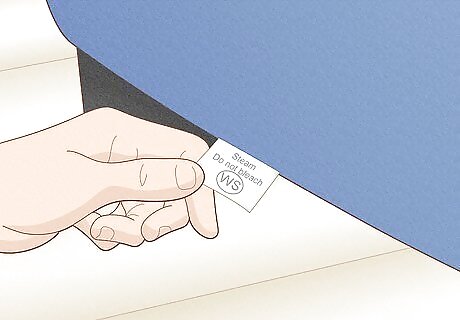
Check your couch tag for cleaning instructions. The couch tag will likely say either W, WS, S, or X. You’re good-to-go with DIY cleaning solutions if the couch says W or WS, but you shouldn’t try these methods if your couch says S or X. W means you can use a water-based cleaner (as we’ll explore in this article). WS means you can use either a water-based cleaner or a commercial solvent. The cleaning solutions in this article will also work for you. S means you can only use a solvent and shouldn’t attempt a DIY cleaning method. X means you can only vacuum the couch. You can damage the fabric if you try cleaning it with a solution.
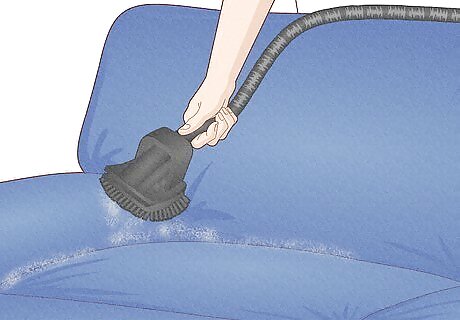
Vacuum up any loose dirt. Use your vacuum’s upholstery brush and crevice tool to remove debris, pet hair, and crumbs. Vacuum all the couch cushions. Then, if you have removable cushions, take them off so you can get into the nooks and crannies of the couch frame. Don’t forget to vacuum along the tops of the couch and the armrests, since those areas get touched frequently.
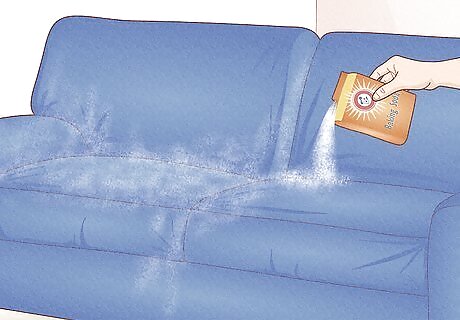
Deodorize your couch with baking soda. This method is safe for all couches because it doesn’t involve liquid cleaner. Generously sprinkle baking soda all over the couch frame and cushions. Wait 15 minutes as the baking soda naturally deodorizes the fabric. Then, vacuum it up for a smell-free couch. Turn off the fans in the room before you start sprinkling the baking soda. This method works on all fabric sofas, but it’s particularly good for cleaning linen sofas without damaging them.
Spot-Treating Stains
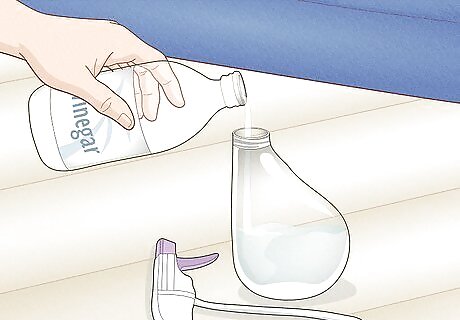
Mix equal parts white vinegar and water for a simple solution. Pour a 1:1 ratio of vinegar to water into a spray bottle. Give the bottle a shake to combine the mixture. Spray the solution directly onto the stain. Wait up to 5 minutes to sanitize the stain (particularly if you have stains from pets). Gently blot the spot-treated area with a clean cloth. Remove any leftover cleaner by taking a clean, damp rag and lightly wiping the spot-treated area. Then, take a clean cloth and pat the area dry. Be sure to use clean white cloths to avoid transferring color from the rag onto your upholstery. It’s always a good idea to test the solution in an inconspicuous area to make sure you won’t change the color of your couch or damage the fabric.
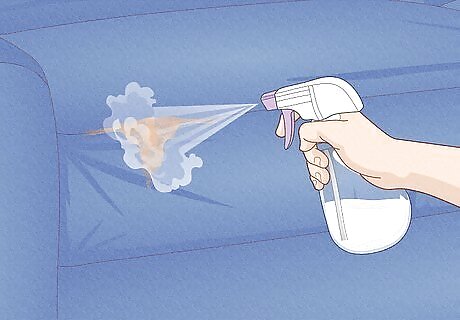
Try a diluted soap and water solution for tough stains. You can add a few drops of natural dish soap into a spray bottle filled with water for this easy solution. If you don’t have a spray bottle, that’s no problem! Just use a rag to blot the stain.

Use white bar soap for an easy stain remover. Rub any white bar soap into a damp microfiber cloth. Then, all you have to do is gently blot the fabric with the rag until you’ve lifted the stain. Follow up with a damp, clean rag to remove any leftover soap residue.
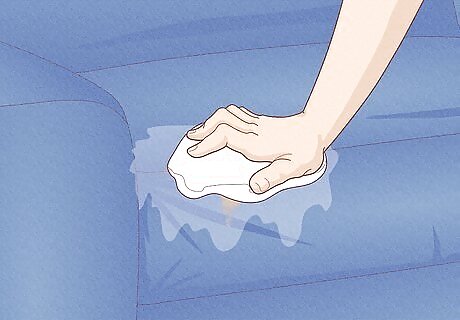
Dampen a cloth with rubbing alcohol to treat ink stains. Pour rubbing alcohol onto a rag so that the rag is slightly damp but not sopping wet. Gently blot the fabric to lift the stain. Press straight down with the cloth and don’t rub the stain. Use a damp, clean cloth to pull up any excess ink and rubbing alcohol.
Deep-Cleaning the Whole Couch
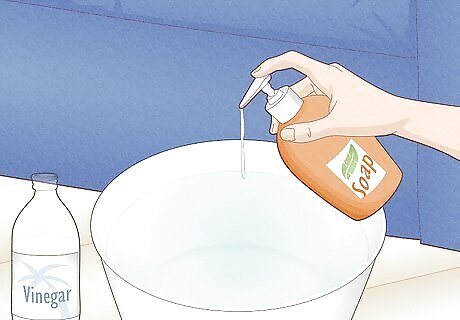
Mix your DIY baking soda and vinegar cleaner. Just stir the ingredients below into a bucket. You can use just white vinegar, baking soda, and water, or you can add a natural soap or detergent to help cut through grease and oil. 2 tablespoons (15 mL) laundry detergent or natural liquid soap 2 tablespoons (15 mL) white vinegar 2 tablespoons (28 g) baking soda 2 cups (470 mL) warm water Natural or “green” detergents and soaps contain fewer harsh chemicals and are derived from plants.
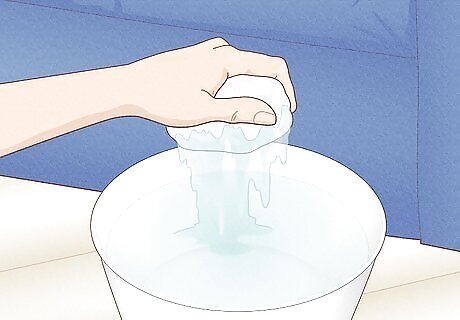
Dampen a rag with your cleaning solution. Wring out any excess liquid so that you don’t soak the couch. Alternatively, if you have a spray bottle, use it to spray the solution onto the couch for a more even distribution.

Wipe the rag with the solution over all the fabric. Use a circular motion and rub gently to remove dirt. Pay close attention to the armrests and cushions, where oil from people’s skin tends to build up.
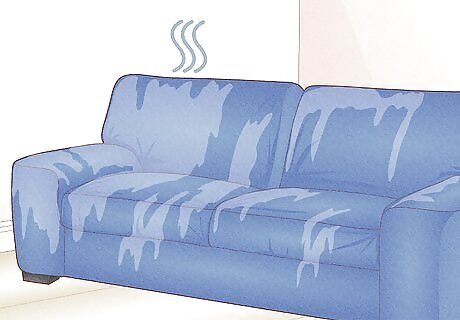
Allow the fabric to air-dry before using the sofa. Don’t use heat to dry your couch or you might accidentally damage the fabric. If you just can’t wait to sit down on your new clean couch, open up doors and windows, or set up a fan to create a breeze and speed up drying time. Couches typically take 8-12 hours to dry.
Steam Cleaning

Pick a steamer designed for fabric and upholstery use. Steer clear of carpet steamers. Even though carpet cleaners come with lots of attachments, they can easily soak your couch and be really tough to maneuver over upholstery. Steam cleaning is optional, but it’s a great way to disinfect your couch, kill mold and mites, and deep-clean the fabric.
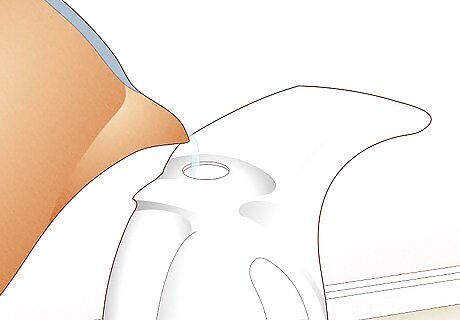
Prepare the cleaning solution for your steam cleaner. To go for an all-natural approach, just use water (either tap or distilled) in your machine. If you’d like to use a cleaning solution, check your machine’s instructions for the ratio of solution to water. Be careful not to use too much cleaning solution because it can be hard to remove from your sofa fabric or damage your machine.
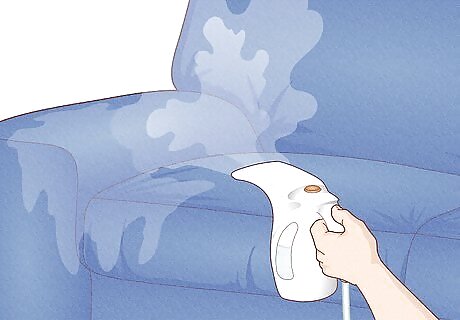
Use repeated, swift strokes to clean the sofa cushions first. Steam 1 side of a cushion at a time. Before you move onto the next side, let the side you just steamed dry. Otherwise, you’ll trap moisture under the cushions and get a mildew/mold smell.

Steam in repeated passes over the rest of the couch. Clean in sections about the size of each cushion, without holding the steamer still in one place for too long. The section-by-section approach prevents you from totally soaking the couch. You don’t want to damage the fabric with too much moisture!
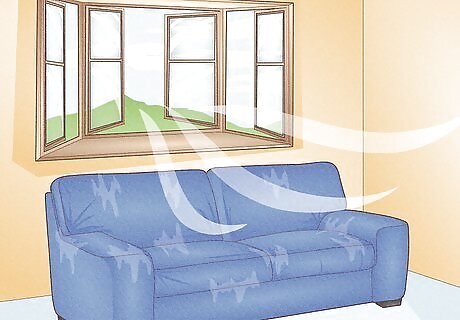
Let your couch air-dry before using it. The time your couch takes to dry will depend on humidity and the exact fabric, but you might have to wait 8-12 hours. Run a towel over the couch if you’d like to wipe up any remaining grime and speed up the drying process. Otherwise, open windows and doors to let the couch air dry.

















Comments
0 comment